Growing Season Lengthens in a North American Deciduous Woody Community From 1993 to 2021
- PMID: 40391119
- PMCID: PMC12086525
- DOI: 10.1002/ece3.71226
Growing Season Lengthens in a North American Deciduous Woody Community From 1993 to 2021
Abstract
Observations of both spring and autumn phenological events were made annually over 29 years (1993-2021) for 22 taxa of multiple growth forms in a mature deciduous forest remnant near Urbana, Illinois, USA. Temporal trends in event dates, trends in stage durations, and associations with weather variables were analyzed with linear mixed-effect models. Species were grouped together in analyses based on seasonality.Spring event dates for most species advanced from 1.2 to 3.0 days/decade, while durations of spring stages shortened from 0.3 to 0.6 days/decade.Autumn event dates for most species delayed from 1.2 to 3.3 days/decade, while durations of autumn stages lengthened from 0.8 to 3.8 days/decade.Overall, the duration of the growing season lengthened for 88% of species (mean of 4.7 days/decade), with greater delays in autumn phenology for canopy trees and greater advances in spring phenology for other woody life forms.In spring, warmer mean daily temperatures were associated with advances in dates of phenological events. In autumn, minimum daily temperature in the preceding month(s) had the highest predictive power for seasonal groups, except those with Aesculus glabra.In autumn, most species had both a delay in phenology and a strong weather predictor, minimum daily temperature in September, that increased significantly through 29 years. In spring, some concordance between advancing event dates and warming spring temperatures were evident after removing data from 2018 to 2021 with especially high variability in spring temperatures.This study supports the hypothesis that climate change is showing a pronounced association with a delay in autumn leaf coloration, and less so an advance of spring leaf expansion. These changes can affect ecological processes, including plant productivity and carbon uptake/storage, assembly of communities, interactions between trophic levels, and species ranges and invasions.
Keywords: autumn phenology; climate change; long‐term; phenology; spring phenology.
© 2025 The Author(s). Ecology and Evolution published by British Ecological Society and John Wiley & Sons Ltd.
Conflict of interest statement
The authors declare no conflicts of interest.
Figures

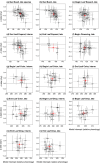
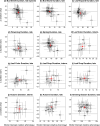
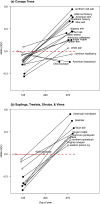
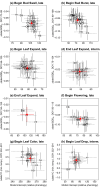
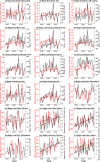



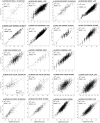
Similar articles
-
An observation-based progression modeling approach to spring and autumn deciduous tree phenology.Int J Biometeorol. 2016 Mar;60(3):335-49. doi: 10.1007/s00484-015-1031-9. Epub 2015 Jul 29. Int J Biometeorol. 2016. PMID: 26219605
-
Extended leaf phenology and the autumn niche in deciduous forest invasions.Nature. 2012 May 17;485(7398):359-62. doi: 10.1038/nature11056. Nature. 2012. PMID: 22535249
-
Responses of canopy duration to temperature changes in four temperate tree species: relative contributions of spring and autumn leaf phenology.Oecologia. 2009 Aug;161(1):187-98. doi: 10.1007/s00442-009-1363-4. Epub 2009 May 16. Oecologia. 2009. PMID: 19449036
-
Antagonistic effects of growing season and autumn temperatures on the timing of leaf coloration in winter deciduous trees.Glob Chang Biol. 2018 Aug;24(8):3537-3545. doi: 10.1111/gcb.14095. Epub 2018 Mar 12. Glob Chang Biol. 2018. PMID: 29460318
-
Phenological and elevational shifts of plants, animals and fungi under climate change in the European Alps.Biol Rev Camb Philos Soc. 2021 Oct;96(5):1816-1835. doi: 10.1111/brv.12727. Epub 2021 Apr 27. Biol Rev Camb Philos Soc. 2021. PMID: 33908168 Review.
References
-
- Augspurger, C. K. 2004. “Development Versus Environmental Control of Early Leaf Phenology in Juvenile Ohio Buckeye ( Aesculus glabra ).” Canadian Journal of Botany 82: 31–36.
-
- Augspurger, C. K. 2008. “Early Spring Leaf out Enhances Growth and Survival of Saplings in a Temperate Deciduous Forest.” Oecologia 156: 281–286. - PubMed
-
- Augspurger, C. K. 2009. “Spring 2007 Warmth and Frost: Phenology, Damage and Refoliation in a Temperate Deciduous Forest.” Functional Ecology 23: 1031–1039.
-
- Augspurger, C. K. 2011. “Frost Damage and Its Cascading Negative Effects on Aesculus glabra .” Plant Ecology 212: 1193–1203.
Associated data
LinkOut - more resources
Full Text Sources

